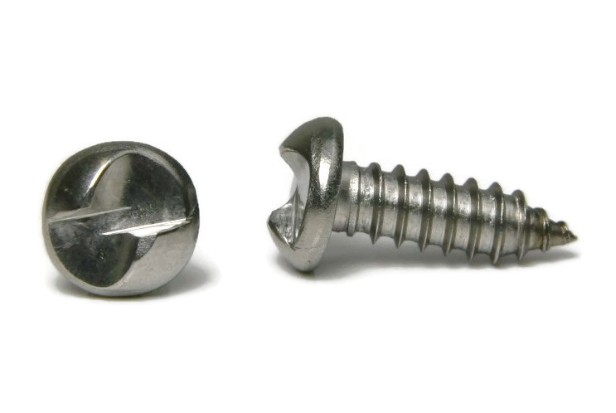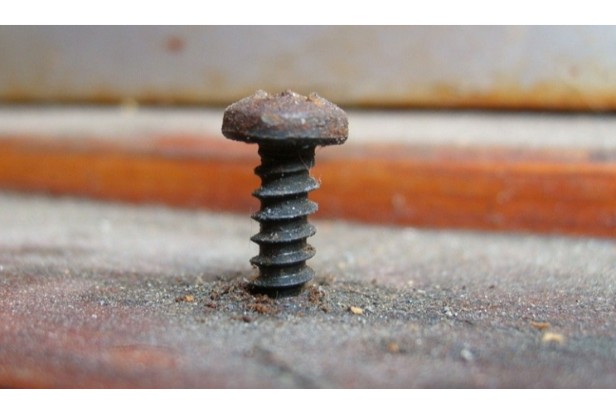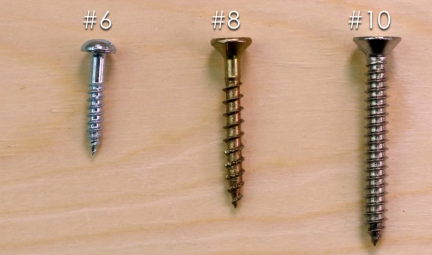
It can be challenging to determine the ideal drill bit size for a precise hole. You might require various drill bit sizes for various applications. Identifying the proper size drill bit for #8 screws may be difficult since this is not a routine task.
We’re here to lend you a hand by providing you with this article as a result.
Table of Contents
What Do #8 Screws Mean?
The screw sizing system consists of 16 standard sizes. From 0 to 14, there are numbers. The diameter of the #8 screw, in particular, is 0.164 Prime, with 5/ 32 Prime being the closest fraction. The actual threads per inch for a #8 screw can be 32, 36, or 40.
These screws have many different applications and are frequently used. It is crucial to understand the size of the drill bit for the #8 screw when working on various projects. It’s crucial to use the right #8 screws for wood construction projects. These devices can be used to fasten thick boards, fiberboard, door frames, and wood to walls. Furthermore, it can stop any stripped screw holes in your wood project.
It is also frequently used to fasten sheet metal parts. These screws are frequently found with pan heads and threads that extend the entire length of the bolt.
What Size Drill Bit for #8 Screws?
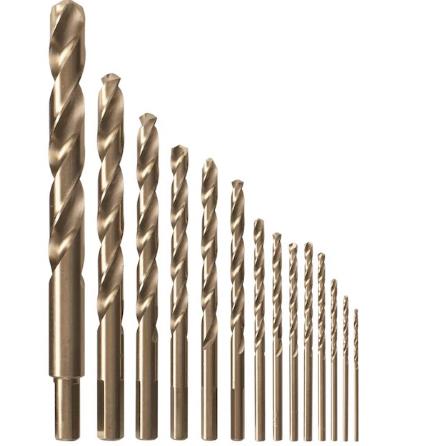
Normally, the thread diameter of a #8 screw is 0.164 inches. In addition to screw diameter, thread count is a crucial factor in determining the precise size and fit of the screw for a given application.
#8 screws are available in three different thread counts, including 32, 36, and 40. The number of threads per inch on a screw is indicated by the thread count, also referred to as thread pitch.
Selecting Drill Bit by Type
There are many different types of drill bits. Different drill bits are needed for the job depending on the material, such as metal, wood, or masonry.
Here are commonly used drill bits with their uses:
- When you look closely at small, pointed drill bits, you’ll notice that they can spur on either side and are typically used on wooden surfaces.
- Masonry bits have carbide-coated tips that are slightly slanted. The drill generally keeps its edge better thanks to the carbide coating. On cinder blocks, stones, and tiles, these drills are also very effective.
However, drilling through tiles can be very difficult and messy. Therefore, masonry drills are advised for such tasks.
- Wide-angled metal drill bits have painted black points at the ends. Due to their extreme versatility, they are regarded as the best drills available. Because of the titanium coating, they are also highly effective and durable.
- Glass can also be drilled through, but it requires greater accuracy than any other material. Therefore, carbide-coated drills are used for such high-precision drilling requirements.
Selecting Drill Bit by Size
- You can find the precise and appropriate size of the drill to be used for a particular purpose using the hole charts that come with drill bits. But if you’re still unsure, use the bit size 1/64″ part smaller than the needed hole.
- The pilot holes should be made larger than the screw’s minor diameter for the majority of hardwood projects.
- The bit is either tapered or standard. The diameter of the screw is typically indicated by the screw size number. It implies that the screw’s diameter will increase as the screw size does.
- Utilizing the drill bit size card is another vital tip that can be used when making drills These plastic cards have round holes provided to measure the drill size punched through them.
- The drill’s 90′ angle attachment is the most practical and precise position for drilling. It is regarded as being small and has a long reach without compromising grip.
- Finally, securing the drill’s connection to the board is a crucial safety measure to take because if not handled carefully, drills can physically harm users.
| Screw Size | Drill Hole Size for Softwood | Drill Hole Size for Hardwood |
| #5 | 1/ 16″ | 5/ 64″ |
| #6 | 5/ 64″ | 3/ 32″ |
| #7 | 3/ 32″ | 3/ 32″ |
| #8 | 3/ 32″ | 1/ 8″ |
| #9 | 3/ 32″ | 1/ 8″ |
| #10 | 7/ 64″ | 1/ 8″ |
The standard pilot hole size for hardwood and softwood are ⅛” and 3/32″ respectively.
What Can Be the Best Size for the #8 Screw?
For drill bit #8, the diameter is approximately 0.1990″. Therefore, it is advised to use an 11/64″ tapered drill when drilling a pilot hole in the hardwood for a screw of the #8 size.
A 5/32″ tapered drill is required for softwood. A standard point drill bit should also be used for square drive screws.
To help you achieve maximum precision, these drill sizes are advised. To avoid harming the surfaces and used materials, accuracy is required. To achieve good results, the drilling pins must be examined prior to drilling.
Considering the hammer drive screws, the drill size selected can be #27, and if the drilling needs to be done on standard wood, the perfect size for screws can be ⅛” inch.
Why Pre-Drill a Pilot Hole?
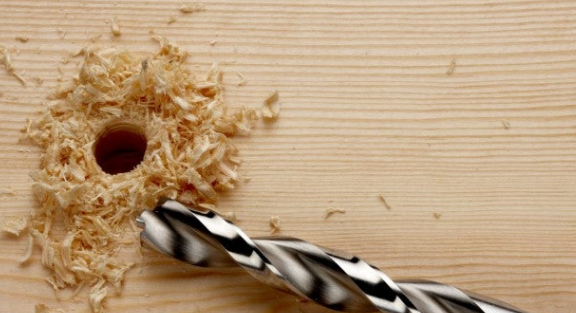
Why is it necessary to pre-drill holes to accommodate the fastener when screws have a sharp end?
It is true that self-tapping screws can easily pierce softwood with the aid of a drill driver or an impact driver. However, you will need to drill pilot holes for larger diameter holes and for tough materials like metal and hardwood. Placing the screw in the proper place is made much simpler by these pilot holes. This work ensures that the materials won’t crack or the screw will stay on during operation when you have several boards to fasten.
You must use a threading tap and drill the hole to the size of the core diameter when threading thick metal plates.
When you work with hardwoods, the pilot hole should be the size of the screw’s “minor diameter.” For softer woods, it may be slightly smaller.
Inserting the screw could result in the formation of hairline cracks in the material if the pilot hole is skipped (or drilled insufficiently large). MDF, plywood, and engineered goods are particularly prone to this issue, but solid wood can also be affected.
Although you might not notice the cracks right away, as the installation ages, they could eventually widen. Your fastening or wood joint project will eventually fall apart if given enough time.
Enlarge the Pilot Hole in a Top Board
When fastening two pieces of wood together, try to drill the bottom board’s pilot hole more deeply than the top board’s. The screw can more easily pull the components together thanks to this design.
The clearance hole must at least match the screw’s major diameter for this step.
You will frequently notice a small gap between the two boards or surfaces joined together when this step is skipped. Depending on what you’re making, glue may be able to achieve this result by sealing the bond, but it won’t work if your spacing is greater than the thickness of a standard sheet of printer paper.
Conclusion
It takes more than a day or two to fully learn and comprehend drilling and its technicalities. You can only make the proper hole in accordance with the size, material, and requirement with practice and concentration. However, drilling is a procedure that is frequently needed in daily life.
You should therefore develop a firm understanding of its related aspects.
Frequently Asked Questions
What is the Primary Difference Between a Tapered Drill Bit and a Straight Drill Bit?
When using a straight drill bit, you can create holes with threads that are evenly spaced along their entire length. As the diameter of the hole decreases gradually from top to bottom, a tapered drill bit produces holes with higher thread contact. The threads pierce deeper into the surface as the hole gets smaller.
Can I Use a Masonry Drill for Wooden Boards?
Yes, you can use a masonry drill to install wooden boards. Stones and bricks, however, respond to masonry drills the best. These drill bits typically move more slowly and produce rough edges when used on materials other than stone, giving holes a soiled appearance.
Furthermore, it has the ability to crack the surface. Therefore, when working on wooden surfaces, a slower pace must be maintained. Pre-drilling wooden surfaces is another important point to remember.
How Can the Size of the Screw Be Determined?
Examining thread counts will reveal the size of the screw. Laying the screw flat on the ground will make it easy to count the threads one at a time within an inch of each other. The length and size of the count gaps can then be divided.

